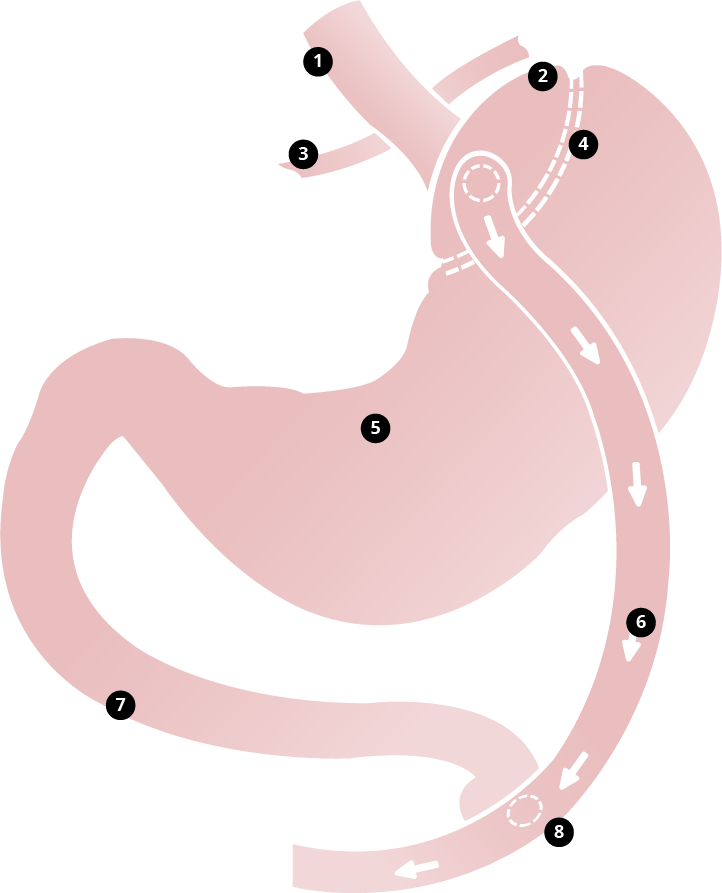Gastric Bypass Surgery
Gastric bypass surgery is an operation in which a small pouch of stomach is created and joined to the small intestine after bypassing an initial segment of small intestine known as duodenum and jejunum. By this arrangement there is delay in mixing of ingested food, and the digestive enzymes.
The net effect of this re-arrangement is a restricted intake of food; and due to the bypass, some malabsorption also takes place, leading to weight loss and resolution of Diabetes. However, it is not only the restriction and malabsorption that leads to weight loss and correction of co-morbidities in obese people. The intestine in our body secretes a number of hormones, which are increased when exposed to undigested food. These hormones modify the metabolism in our body in such a way that diabetes is either resolved or controlled. Similarly, blood pressure and a host of other problems are corrected due to these hormonal changes. Some of these hormones also increase our resting metabolic rate such that we consume more energy even at rest.
Gastric Bypass (RYGB) Surgery is done laparoscopically, or by Robotic Assistance and is still the “Gold Standard” in the world. All other procedures are usually compared to this when it comes to the results in terms of excess weight loss and resolution of co-morbidities.

1. Esophagus
2. New Stomach Pouch
3. Diaphragm
4. Staples
5. Bypassed Part of Stomach
6. Flow of Food
7. Unused Portion of the Small Intestine
8. Small Intestine
Nutritional Deficiencies
**The table displays nutritional deficiencies commonly encountered in research studies.
News & Updates
Sign up to get the latest on sales, new releases and more…

